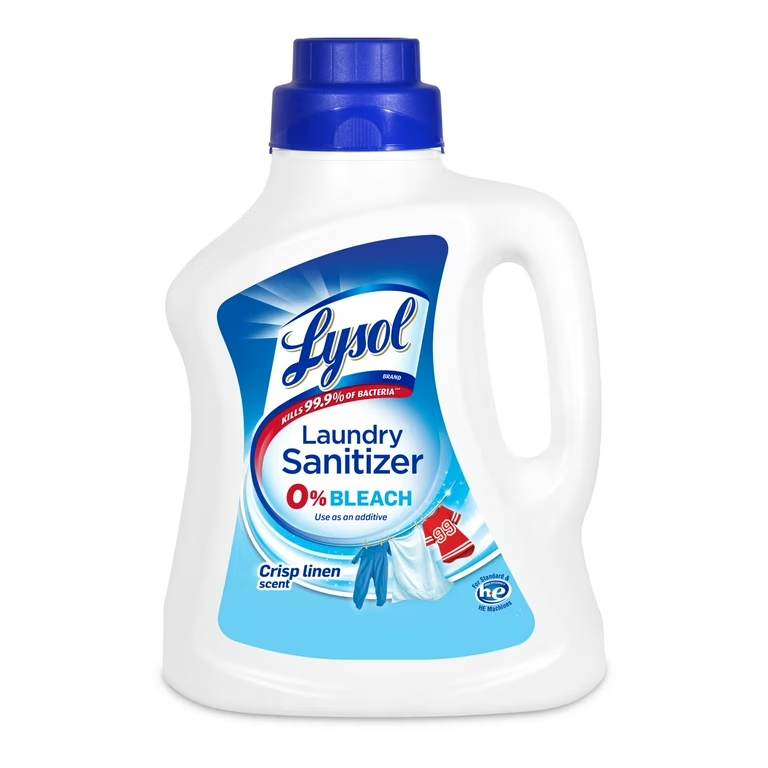What Is Detergent and How Does It Work?
Detergents are key to clean laundry. They remove dirt and stains from clothing. But not all detergents kill bacteria.
The Role of Surfactants in Cleaning
Surfactants are the main part of detergents. They trap dirt and grease. Then, they lift them away from fabrics in the wash.
Additional Ingredients That Boost Detergent Effectiveness
Other than surfactants, detergents have more parts. Alkalies break down stains. Enzymes target specific types of stains like blood or oil. Brighteners make clothes appear whiter. Fragrances add a fresh scent. However, high heat is needed to kill bacteria. Detergents may not do it alone.
The Truth About Detergent and Bacteria
Limitations of Detergents in Killing Bacteria
Many believe detergents kill all laundry bacteria. This isn’t true. Most detergents remove dirt, not bacteria. Surfactants in detergents clean clothes by lifting away dirt. They don’t always kill bacteria. Some bacteria form spores or biofilms. These can resist detergents and survive wash cycles.
Hot water and certain chemicals can kill bacteria. Regular detergent cannot do this alone. It’s important to use the right methods to ensure bacteria-free laundry. Some detergents have added antibacterial agents. Yet, not all come with these properties. Users must read labels carefully.
Factors Influencing Detergent’s Antibacterial Properties
Several factors change how detergents deal with bacteria. The type of detergent matters. Some have special ingredients that target germs. Water temperature is also critical. Hotter water can kill bacteria better than cold. Washing methods play a role too. For example, machine washing usually removes more bacteria than hand washing.
The age of the detergent can affect its effectiveness. Over time, active ingredients lose strength. This reduces the detergent’s ability to clean and kill bacteria. Always check detergent expiration dates.
In summary, detergents help remove dirt from clothes. But they might not kill every bacterium. To fight bacteria, you should use additional methods. These include hot water, bleach, or other disinfectants. It’s vital to combine good detergent with other cleaning habits for the best results.
Understanding Washing Machine Myths
Misconceptions about washing machines can lead to ineffective laundry routines.
The Myth of Water Temperature and Bacteria Eradication
Many think hot water alone kills all laundry bacteria. Not true. Without disinfectants, some bacteria remain after washing.
Debunking the More Detergent Equals Cleaner Clothes Myth
Using too much detergent doesn’t mean cleaner clothes; it can result in residue and machine damage.
Exploring Bio vs Non-Bio Detergent
Bio detergents contain enzymes, which are effective at removing stains in cold water and may kill some germs.
The Importance of Regular Washing Machine Maintenance
Clean your machine regularly to prevent bacteria buildup, which can affect your laundry’s cleanliness.

Bacteria-Fighting Practices in Laundry
Maintaining a hygienic laundry routine is crucial in the fight against bacteria. Here are some tried and true methods to keep your laundry bacteria-free.
Tips for Washing at High Temperatures
Hot water can kill bacteria effectively. When possible, wash fabrics at 60癈 (140癋) or higher. Always check labels to prevent damage. This method is great for cottons and linens.
The Role of Bleach and Vinegar as Disinfectants
Bleach and vinegar are strong against bacteria. Half a cup of either can enhance disinfection. Use bleach for whites and vinegar for colors. Check the fabric care label first.
Using Dryers and Irons to Kill Bacteria
Dryers and irons use heat to kill bacteria. After washing, dry clothes for at least 45 minutes. Iron items on high heat to eliminate germs.
The Effectiveness of Sunlight and Fresh Air
The sun’s UV rays can disinfect clothes. Hang laundry outside to dry on sunny days. Fresh air also helps remove odors and freshness to fabrics.

Best Practices for Keeping Your Laundry Hygienic
Maintaining hygiene in your laundry routine is key to keeping bacteria at bay. Here are some essential practices:
Separating Clothes by Risk Level
Sort your laundry before washing. Group high-risk items like underwear and gym clothes separately. This helps reduce cross-contamination.
Keeping Towels Separate
Wash towels on their own. Towels can hold moisture and bacteria, so they need special care.
Regular Cleaning of Laundry Hampers
Clean your hampers often. Use disinfectant sprays or wipes to keep them germ-free.
The Use of UV Light and Silver-Based Products for Disinfection
Consider UV light devices or silver-infused items for extra defense. These technologies target and kill germs effectively.

Conclusion
To wrap up, detergent alone might not kill all bacteria in your laundry. Remember, clean doesn’t always mean germ-free. For a truly hygienic wash, combine good detergents with other cleaning methods like hot water and disinfectants. Make sure to read labels and understand what you’re using.
Eco-Friendly and Effective Alternatives for Cleaner Laundry
For a more sustainable approach, consider eco-friendly products. These include laundry solutions with natural antibacterial properties like tea tree oil or baking soda. Also, embrace laundering methods that conserve resources, such as using cold water formulas that are designed to perform well in lower temperatures.
Choose concentrated or plant-based detergents to reduce plastic use and harsh chemicals. Another tip is to opt for reusable dryer balls instead of single-use dryer sheets. These options contribute to a healthier environment and clean laundry.
Adopting Effective Laundry Hygiene Practices
To keep your laundry as hygienic as possible, follow these simple but effective steps:
- Always check clothing labels for washing instructions and hygiene tips.
- Sort laundry by how dirty or contaminated they might be, especially after illness.
- Use the correct detergent amount, as too much or too little can affect cleaning performance.
- Clean your washing machine and hampers regularly to prevent germ buildup.
- Try using sunlight or eco-friendly UV light devices to help disinfect your clothes.
By integrating these practices into your routine, you can ensure that you’re not just cleaning your laundry but also protecting your household against bacteria and germs.
